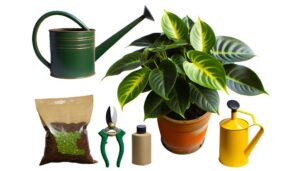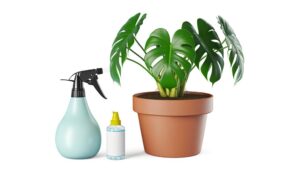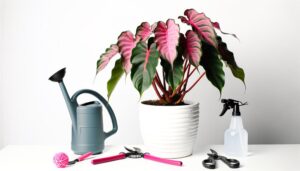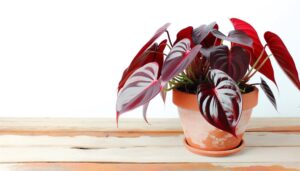How Do I Care for a Congo Rojo Philodendron? Expert Tips!
To properly care for a Congo Rojo Philodendron, secure a warm environment and moderate to bright indirect light, avoiding direct sunlight. The plant prefers well-drained, organic-rich soil, with regular but mindful watering to prevent overhydration.
Maintain a pH soil balance between 6.0-7.0, fertilizing monthly in spring and summer. Pruning for shape and health is also recommended.
The plant thrives in 65-75°F temperatures and appreciates humidity levels of 40-60%. Stick to these fundamental care guidelines and you’ll discover a host of detailed techniques to enhance the vibrant health of your Congo Rojo Philodendron further.
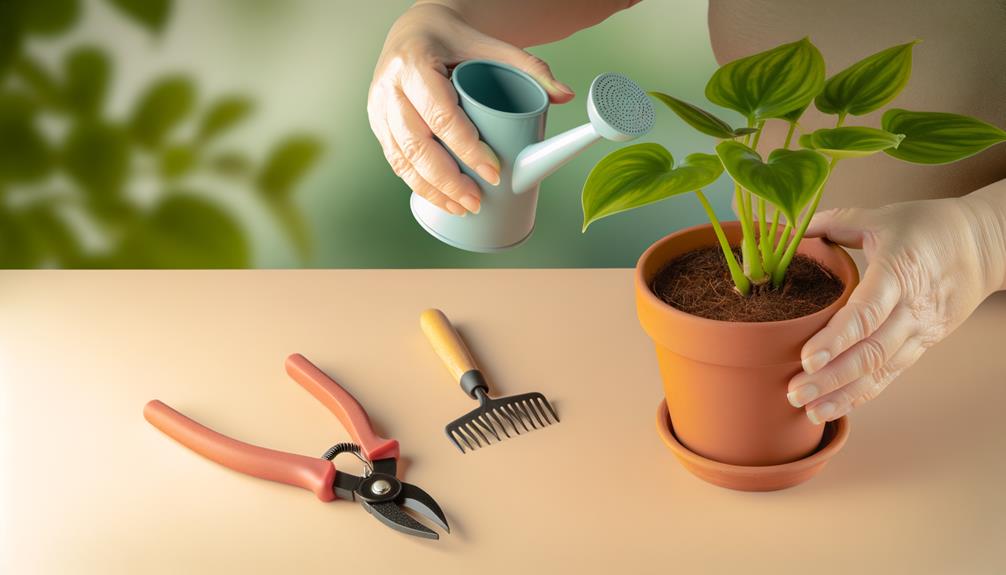
Key Takeaways
- Position Congo Rojo Philodendron in moderate to bright indirect sunlight, avoiding direct exposure.
- Water regularly, allowing the top inch of soil to dry out to prevent root rot.
- Use a well-drained, organic-rich soil with a pH balance of 6.0-7.0 and fertilize monthly during spring and summer.
- Maintain an environment with temperatures of 65-75°F and humidity levels of 40-60%.
- Prune dead or yellowing leaves and overgrown stems to promote healthy growth and repot every 2-3 years.
Understanding Congo Rojo Philodendron
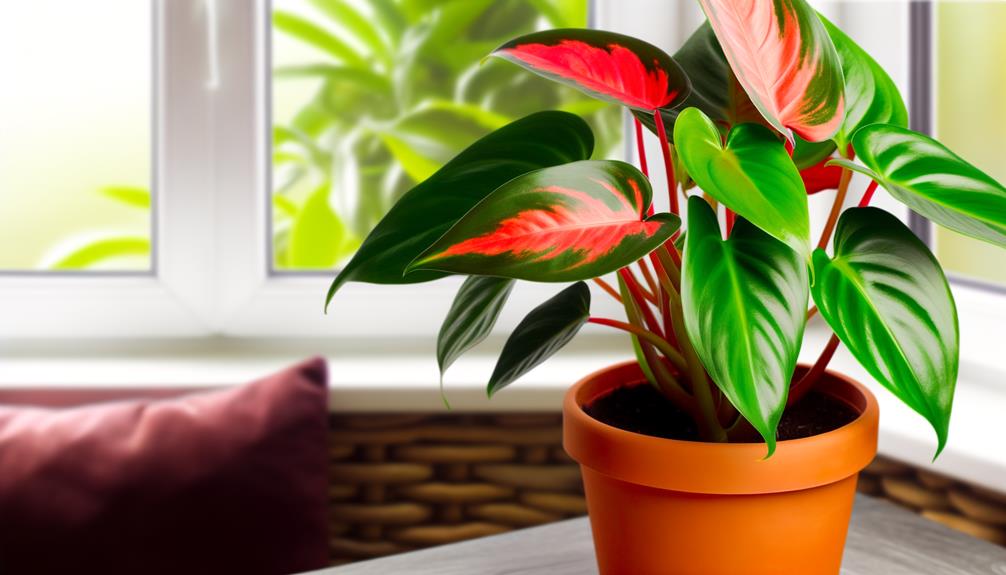
While the Congo Rojo Philodendron, known for its glossy, deep red leaves, is a relatively hardy plant, understanding its specific needs and growth habits is vital for ensuring its best health and vibrancy. Native to South America, this plant thrives in warm, tropical climates and prefers well-drained soil enriched with organic matter.
It’s a fairly low-maintenance plant, but it does require regular watering, typically once per week. Overwatering can lead to root rot, so it’s important to allow the soil to dry out between waterings. Avoid placing the plant in areas with drafts or sudden temperature changes. This plant is not frost-tolerant and should be kept indoors in cooler climates.
With proper care, the Congo Rojo Philodendron can grow up to 2-3 feet tall and wide, making it an excellent choice for indoor decoration.
Ideal Lighting Conditions
The Congo Rojo Philodendron thrives under specific lighting conditions, which are essential to its growth and well-being.
It’s important to understand its natural light needs, explore artificial lighting options, and also prevent direct sunlight damage.
Each of these factors plays a significant role in maintaining the plant’s vibrant red coloration and overall health.
Understanding Natural Light Needs
Congo Rojo Philodendrons flourish under moderate to bright indirect sunlight, showing a preference for a north or east-facing window exposure. Their peak health depends on understanding and providing for their natural light needs.
Avoid exposure to direct sunlight as it can scorch their leaves, leading to an unhealthy plant. Remember, the intensity of natural light varies throughout the day and with the changing seasons.
A room with large windows that allows in ample morning sunlight is ideal. However, protect your plant from harsh midday and afternoon sun. The aim is to replicate the natural, dappled light of a tropical rainforest floor, where these plants naturally thrive.
Regularly rotating your Congo Rojo Philodendron will guarantee it receives light evenly, promoting balanced growth.
Artificial Lighting Options
In situations where natural light is insufficient, artificial lighting can serve as an effective alternative for maintaining your Congo Rojo Philodendron’s health and growth. It’s essential to choose a lighting solution that closely mimics the spectrum of sunlight while avoiding extreme light intensity.
Here are a few options:
- Fluorescent lights: They provide a balanced spectrum of light, ideal for indoor plants.
- LED grow lights: These are energy-efficient and can be customized to provide the right spectrum of light.
- Incandescent lights: While not as efficient, they can be used in combination with other light sources.
Avoiding Direct Sunlight Damage
Exposure to intense, direct sunlight can cause severe harm to your Congo Rojo Philodendron, making it crucial to comprehend and implement optimal lighting conditions.
This tropical plant thrives in bright, but indirect light. Too much direct sunlight can scorch the leaves, leading to browning or wilting. To shield your plant from such harm, position it near a north or east-facing window. If this is not possible, consider using a sheer curtain to filter the sunlight.
Regularly checking your plant for signs of light stress, such as yellowing leaves or slowed growth, can help you adjust its lighting conditions promptly. This proactive approach will guarantee your Congo Rojo Philodendron remains healthy and vibrant, serving as a tribute to your nurturing care.
Watering Techniques and Schedule

Proper hydration is crucial for the health of your Congo Rojo Philodendron, and understanding the correct watering techniques and schedule can greatly enhance the plant’s growth and longevity.
This plant prefers a consistent watering schedule, where the top inch of soil is allowed to dry out between waterings. Over-watering or letting the plant sit in water can lead to root rot, a common problem for this species.
Here are some practical tips to maintain your Congo Rojo Philodendron stays well-hydrated:
- Use lukewarm water instead of cold to avoid shocking the plant.
- Water the plant early in the day to allow excess water to evaporate before nightfall.
- Ensure adequate drainage to prevent waterlogging.
Suitable Soil Type and Fertilizer
Understanding the suitable soil type and fertilizer for a Congo Rojo Philodendron is crucial to its healthy growth. The topic will focus on the ideal soil composition, detailing the components that contribute to best nutrient absorption and root health.
Additionally, we will provide practical tips on selecting the most effective fertilizer to support this plant’s vibrant foliage and overall health.
Ideal Soil Composition
Frequently, the prosperity of a Congo Rojo Philodendron hinges on its soil composition, which ideally should be a well-draining mix enriched with organic matter and fertilized with a balanced, slow-release formula. This guarantees the plant receives the necessary nutrients gradually and in the right proportions, aiding in healthy growth and vibrant foliage.
In creating the optimum soil composition, consider the following elements:
- Organic Matter: Compost, leaf mold, or well-rotted manure can enrich the soil, improving its structure and nutrient content.
- Drainage: Add coarse sand, perlite, or bark chips to enhance soil drainage, preventing water-logged conditions which can lead to root rot.
- pH Balance: Congo Rojo Philodendron prefers slightly acidic to neutral soil (pH 6.0-7.0). Regularly test and adjust the soil pH as needed.
These practical steps can help your Congo Rojo thrive in a conducive environment.
Fertilizer Selection Tips
Exploring the many fertilizer choices for your Congo Rojo Philodendron can seem overwhelming, yet selecting the right type can greatly impact the plant’s health and significance.
Consider a balanced, water-soluble fertilizer, like a 20-20-20, which provides equal parts of nitrogen, phosphorus, and potassium. These nutrients are essential for overall plant health, promoting growth, bloom, and disease resistance.
However, be cautious not to over-fertilize. Excessive nutrients can lead to toxicity, manifesting as leaf burn or stunted growth.
The Congo Rojo prefers a monthly fertilization during the growing seasons of spring and summer.
Make sure to water the plant thoroughly after each feeding to distribute the fertilizer evenly around the root zone, avoiding concentrated spots that could harm the plant.
Temperature and Humidity Preferences
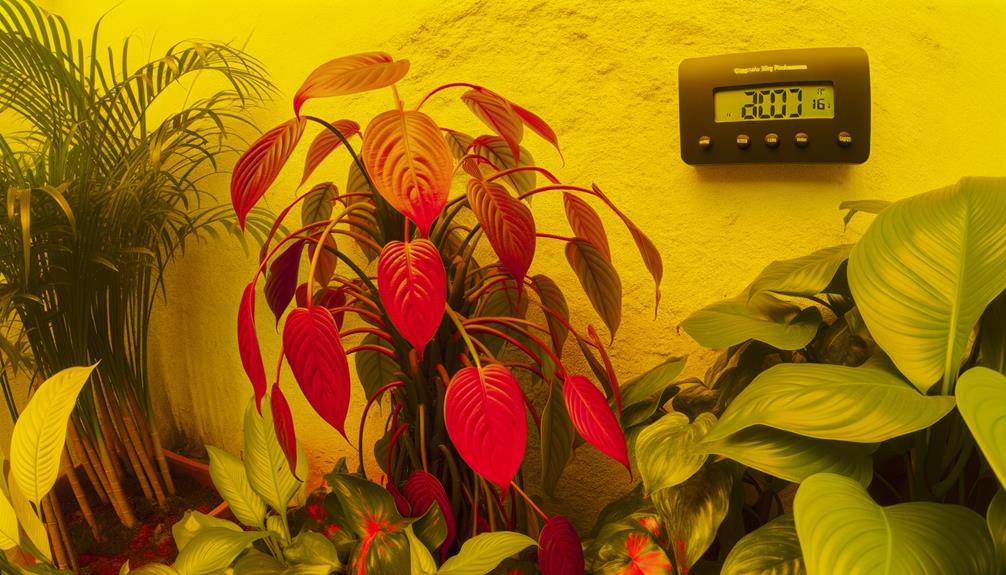
While the Congo Rojo Philodendron is particularly resilient, it thrives best in temperatures ranging from 65 to 75 degrees Fahrenheit and prefers a humidity level of around 40 to 60 percent. This plant is sensitive to drastic temperature fluctuations and low humidity levels.
To maintain peak health for your Congo Rojo Philodendron, consider the following tips:
- Ensure the plant’s environment is consistently warm, avoiding locations prone to chilly drafts or sudden temperature drops.
- Use a humidity gauge to monitor moisture levels. If they are too low, consider using a humidifier or placing the plant on a water-filled tray with pebbles.
- Avoid placing your plant near heat vents or air conditioners, as these can create dry air conditions.
Understanding and meeting these preferences will help your Congo Rojo Philodendron thrive in your care.
Congo Philodendron Imperial Red
Philodendron Imperial Red, also known as Congo Philodendron Imperial Red, is a popular houseplant known for its striking red foliage.
Here are key care tips:
- Light: Prefers bright, indirect light. Can tolerate lower light but may exhibit slower growth and less vibrant color.
- Watering: Water when the top inch of soil feels dry. Avoid overwatering; the plant prefers consistent moisture but not soggy soil.
- Humidity: Thrives in higher humidity but adapts well to average indoor humidity. Increase humidity by misting the plant or using a humidifier.
- Temperature: Ideal temperature range is 65-80°F (18-27°C). Avoid exposure to cold drafts or sudden temperature fluctuations.
- Soil: Use a well-draining potting mix rich in organic matter. A mix designed for aroids or houseplants is ideal.
- Fertilization: Fertilize with a balanced, water-soluble fertilizer every 4-6 weeks during the growing season (spring and summer).
By following these guidelines, your Philodendron Imperial Red will flourish and maintain its vibrant red leaves.
Pruning and Repotting Tips
Regular pruning and timely repotting are integral aspects of maintaining a healthy Congo Rojo Philodendron, ensuring its vibrant foliage and promoting ideal growth. Prune this plant at least twice a year, removing any yellow or brown leaves to prevent disease spread. Use sharp, sterile pruning shears to create clean cuts.
Repot your Congo Rojo when it outgrows its current pot, typically every two to three years. Choose a pot that is only slightly larger than its current one to avoid root rot. When repotting, gently tease the roots and replenish with fresh soil mix.
These practices not only contribute to the aesthetic appeal of your plant but also enhance its overall health, making it more receptive to growth and resistant to disease.
Conclusion
To sum up, the Congo Rojo Philodendron, with its striking appearance, can be a delightful addition to any indoor space.
Proper care, which includes strategically providing ideal lighting, implementing effective watering techniques, using suitable soil and fertilizer, maintaining desirable temperature and humidity levels, and adhering to correct pruning and repotting practices, is imperative for its healthy growth.
Is it not fascinating how such meticulous care can result in a thriving, visually appealing indoor plant?

